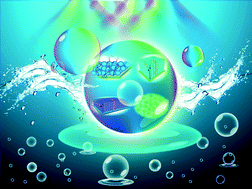Written by Christopher Hinde. Christopher obtained his Masters in Chemistry (MChem) from the University of Southampton, UK in 2011. He is currently doing research towards a Ph.D. in the area of materials chemistry and catalysis under the supervision of both Dr Robert Raja at the University of Southampton and Prof. T. S. Andy Hor at the Institute of Materials Research and Engineering (IMRE), a research institute in Singapore’s Agency for Science Technology and Research (A*STAR).
 Surely the next go-to article in the area of semiconductor photocatalysis, this thorough review by a group from the US is likely to appeal to both young researchers and established scientists alike. If you are new to the area of photocatalysis with semiconductor materials, the authors do a great job of collating the best background literature to introduce the topic, key principles and concepts in a concise fashion. At the same time, the authors have intricately organised the cutting edge research in the field so as to provide a useful tool for established researchers to continue pushing the frontiers of solar energy conversion.
Surely the next go-to article in the area of semiconductor photocatalysis, this thorough review by a group from the US is likely to appeal to both young researchers and established scientists alike. If you are new to the area of photocatalysis with semiconductor materials, the authors do a great job of collating the best background literature to introduce the topic, key principles and concepts in a concise fashion. At the same time, the authors have intricately organised the cutting edge research in the field so as to provide a useful tool for established researchers to continue pushing the frontiers of solar energy conversion.
In the first instance, a summary of single material photocatalysts are discussed from the well-known metal oxides and sulphides such as TiO2 and CdS through to mixed metal oxides and heavier group VI materials. Especially highlighted is how the chemical and physical structures of materials help to define the optical properties that are required for catalytic processes; band structures can be influenced by doping and energy losses can be minimised by manipulating the dimensionality and macrostructures of engineered materials.
Further discussed are more complex semiconductor composites, bringing together multiple semiconductors or combining with other materials such as carbons. These in turn have led to the development of devices such as tandem cells, which have drastically improved upon the quantum efficiencies that can be attained. The authors have successfully drawn together state-of-the-art work, breaking down the theoretical considerations in a logical manner, to allow the reader to appreciate the current state of research in the field whilst leaving the door wide open for development and innovation for the future.
Take a look at the full review article now!
Semiconductor-based photocatalysts and photoelectrochemical cells for solar fuel generation: a review
Jiangtian Li and Nianqiang Wu
DOI: 10.1039/C4CY00974F











